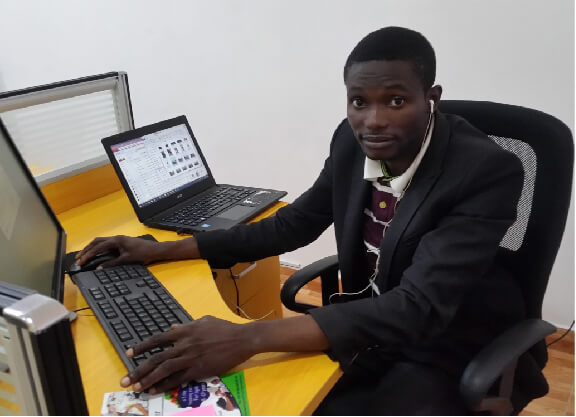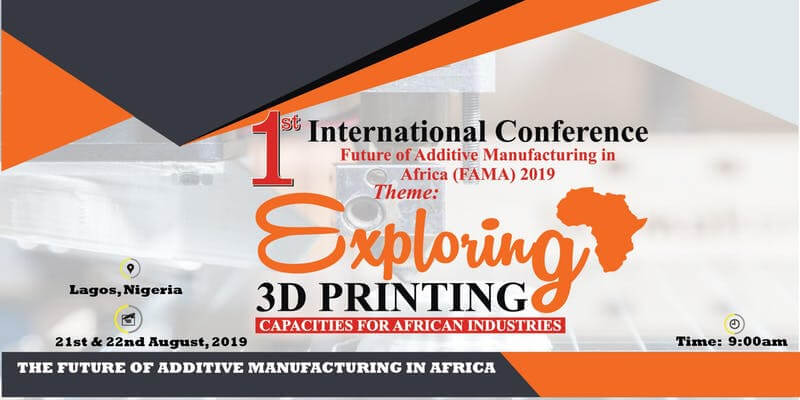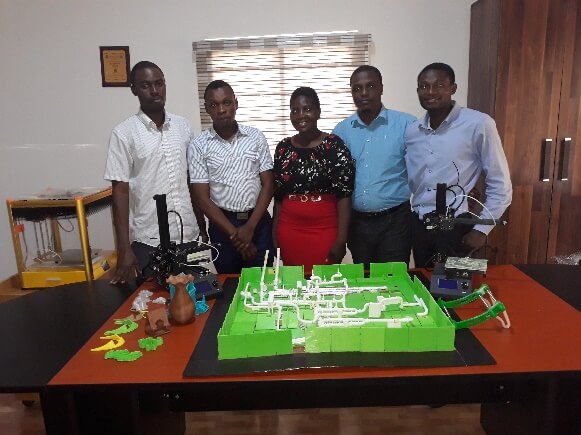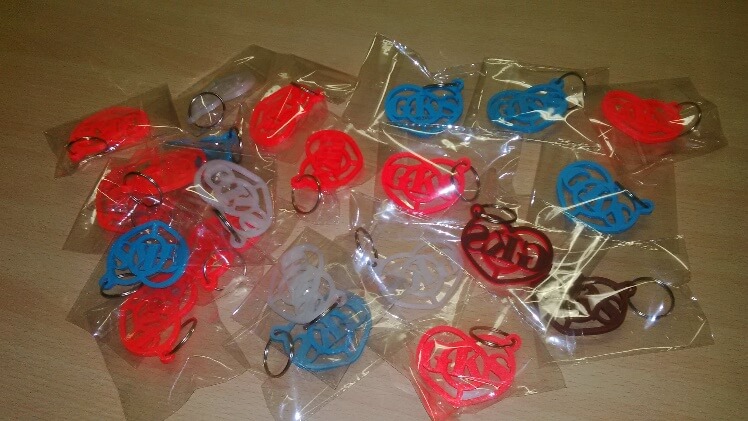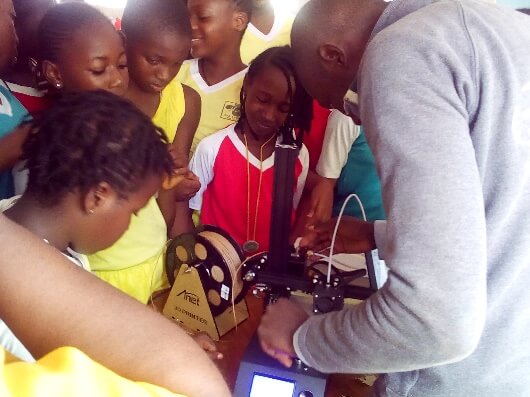Nigeria is an African country well known for high profile academics and a large base of entrepreneurs. How is Africa’s most populous country utilizing these twin resources for 3D Printing? We interviewed Godwin Izibilli of CAD Works to give you insights into 3D printing in Nigeria.
Godwin Izibilli
Who are you and what is CAD Works?
I am presently the head of the operation at CAD WORKS limited. I did my engineering degree at the University of Benin, Benin-city and graduated after which I worked in the vehicle assembly unit of KIA Motors (that is after the one-year mandatory National Service in Kwara-State, Nigeria). And also consult for Prightle solutions on a part-time basis.
Cad Works Limited is an engineering company that specializes in various engineering design, CAD consulting, Laser Scanning, and 3D printing services which could be in form of setting up 3D printing Laboratory, 3D printer sales and repairs, 3D printing service, part designs, and training on Engineering Design. We are presently located in Nigeria and Ghana and have carried out projects for companies like Chevron Nigeria Limited, Mobil Nigeria limited, Global Ocean and many more. We have recently done several presentations/expo for the Association of professional women Engineers in Nigeria, Nigeria Society of Engineers (Victoria Island), DigiFab Conference, Girls Hackathon for Justice, and for the sake introduction, we are having a 3D printing conference for the whole of Africa. It is called “Future of Additive Manufacturing in Africa.”
What are some of the projects that you do in 3D printing and Additive Manufacturing?
We recently worked on an oil facility that did not have a 3D model of the entire facility. So, our team did the laser scanning of the facility and produced the 3D model of the facility after which we used the 3D model to 3D print a model of the facility.
3D printed oil facility model
Also, we 3D modeled and 3D printed a large number of key holders for a church as a souvenir during their Christmas celebration.
3D printed church key holders
Give us a brief description of the 3D Printing landscape in Nigeria?
The Nigerian environment is a dicey one in the sense that people who are aware of the technology are fascinated by it, but are not willing to take steps. Some factors which are negatively impacting this include the cost. Also, because of the unavailability of metal 3D printers in the country, big players do not stimulate that development. But some schools are gradually taking it into their extra-curricular activities. Individuals who want to print products, want the finishing to be as if the production process was like that of an injection molding process. This is holding us back. But the market is growing, people are seeing the need. It would be a boom if the government could either train masses of people or create centers where individuals can print at a much lower cost and still have a quality product.
Demonstrating 3D printing to students
You have recently published the first edition of your 3D Printing magazine entitled ‘Advanced Manufacturing’ and of particular interest is the section ‘Why 3D printing matters to Africa’.
That article, we hope could cause an awakening that this technology is made for us and that several persons are already doing something great with it. Take, for example, some time ago, some Togolese created a 3D printer from recycled materials! This I believe should be encouraged as I know that since most things that pertain to this technology are open source (that is from models to parameters, to experiences), we Africans, can utilize the opportunity to grow somethings for ourselves and become innovators! Like the rest of the world.
Do you see any possible financial support in developing 3D printing in Africa considering that it’s one of the challenges in promoting the technology?
It all depends in which direction they do this. Nobody I believe would invest in something unless the person has something to benefit from it. Unless it’s just for humanitarian purposes. To this end, I feel we only within Africa through the government seeing the need, or individuals who have technology inclined business and as such would be willing to bring out resources gotten from another venture, and put it into 3D Printing. But the difficult thing about it is that, as the usefulness of the 3D Printing technology expands, and as the time to print/volume of prints increases, individuals and bodies (which also includes schools of different cadres) would embrace it and include it to their everyday lives. As in the case of South Africa, the government saw the need and invested in the technology. I believe that other countries would with time, do the same and encourage the young ones to become beneficiaries of this technology.
Subscribe to Our Email Newsletter
Stay up-to-date on all the latest news from the 3D printing industry and receive information and offers from third party vendors.
Print Services
Upload your 3D Models and get them printed quickly and efficiently.
You May Also Like
Making 3D Printing Personal: How Faraz Faruqi Is Rethinking Digital Design at MIT CSAIL
What if your 3D printer could think more like an intelligent assistant, able to reason through a design idea, ask questions, and deliver something that works exactly the way the...
Reinventing Reindustrialization: Why NAVWAR Project Manager Spencer Koroly Invented a Made-in-America 3D Printer
It has become virtually impossible to regularly follow additive manufacturing (AM) industry news and not stumble across the term “defense industrial base” (DIB), a concept encompassing all the many diverse...
Heating Up: 3D Systems’ Scott Green Discusses 3D Printing’s Potential in the Data Center Industry
The relentless rise of NVIDIA, the steadily increasing pledges of major private and public investments in national infrastructure projects around the world, and the general cultural obsession with AI have...
Formlabs Teams Up with DMG MORI in Japan
In late June, Nick Graham, Chief Revenue Officer at Formlabs, announced on LinkedIn that the company had partnered with DMG MORI, one of the world’s leading machine tool companies, to...


